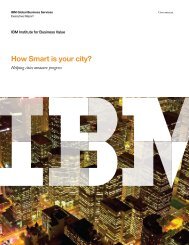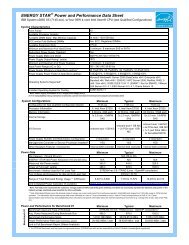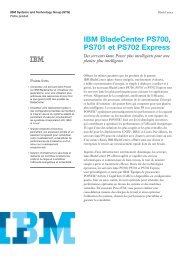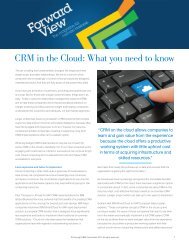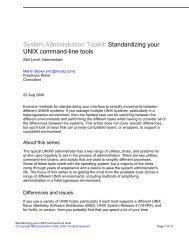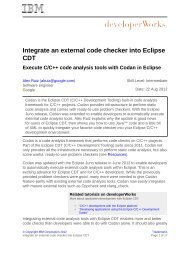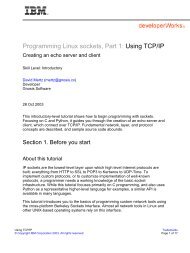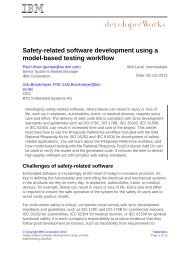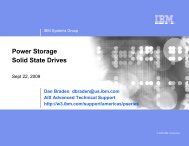TEC Workbook - IBM
TEC Workbook - IBM
TEC Workbook - IBM
Create successful ePaper yourself
Turn your PDF publications into a flip-book with our unique Google optimized e-Paper software.
<strong>IBM</strong> Software<br />
3.2.11 DataPower Contexts<br />
While configuring the various actions (sign, transform, etc.), you may have noticed that each action<br />
declares an input and an output context. In the case of a transform action, the input context will be the<br />
document that is fed to the transformer, and the results of the transformation will be written to the output<br />
context.<br />
Some actions may only have an input context. For example, the verify action has an input context, but no<br />
output context; the signature verification either passes or fails. In contrast, some actions may only have<br />
an output context. The fetch action can fetch an XML document from a local file or a remote server, and<br />
the fetched document becomes the output context. Contexts are referred to by the following names:<br />
● INPUT – represents the original message as it arrived from the client.<br />
● OUTPUT – represents the outbound message which will be forwarded to the destination. In<br />
the case of client-to-server processing, the OUTPUT context represents what will be sent<br />
to the backend server. In the case of server-to-client processing, the OUTPUT context<br />
represents what will be returned to the client.<br />
● NULL – indicates that the output is not needed. In other words, the output from the action<br />
is sent to the bit bucket.<br />
● PIPE – indicates that the output of the action should be piped into the input of the next<br />
action. In this case, the input context of the next action must also specify PIPE.<br />
● Named context – in this case, you can assign a name to a context and use it at a later<br />
point in the processing rule. For example, a transform action can be configured with an<br />
input context of INPUT and an output context of newRequest. Later in the processing<br />
rule, another action can use newRequest as the input context.<br />
__1. Click on the magnifying glass in front of the transform action.<br />
The XML document shown in the window shows what will be fed into the transform action as the context<br />
document. In this case, the message with the digital signature will be the input context to the<br />
transformation.<br />
__2. Click on the magnifying glass after the transform action (in front of the sign action).<br />
The input to the schema validate action is the results of the prior transform action. In the content section,<br />
notice that the digital signature has been removed.<br />
Page 62 WebSphere Lab Jam



